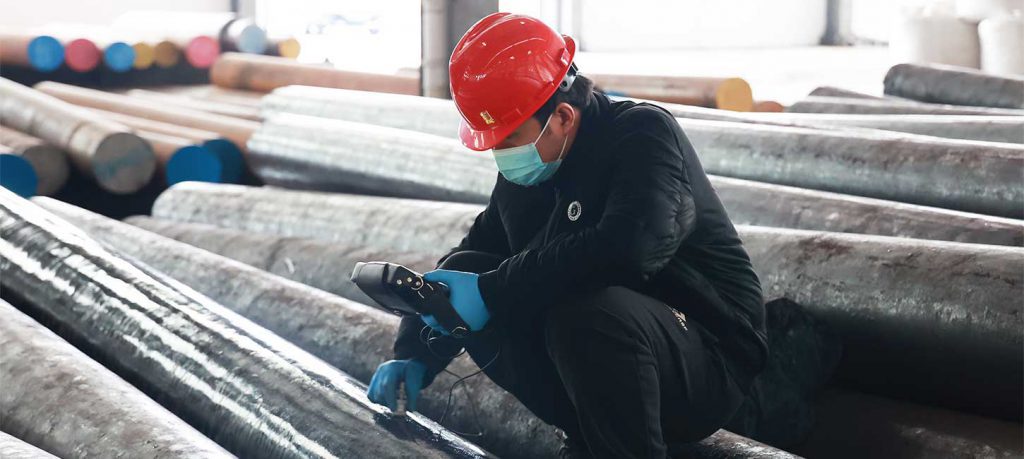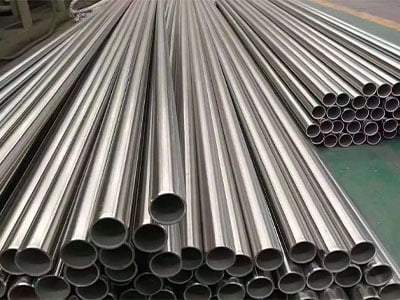Introduction

Choosing the right stainless steel pipe for your project is crucial for ensuring optimal performance, durability, and cost-effectiveness. With a multitude of options available, it’s important to consider various factors to make an informed decision. In this blog post, we’ll explore five essential tips to guide you through the process of selecting the right stainless steel pipe for your specific needs.
Understand Your Application Requirements
Before making a decision on which stainless steel pipe to select, it’s imperative to delve deep into understanding the intricacies of your application requirements. It’s not just about knowing what the pipe will be used for; it’s about comprehending the nuances of the environment in which it will operate. Take into account factors such as the intended purpose of the pipe—are you looking for something to transport fluids, withstand high-pressure conditions, or resist corrosion in a harsh environment? Understanding the exact operating conditions, including temperature variations, pressure fluctuations, and exposure to corrosive substances, is paramount.
Moreover, consider the level of strength required for your application. Are you dealing with heavy-duty industrial processes that demand pipes with high tensile strength and durability? Or are you looking for something more lightweight and flexible for a residential plumbing project? Determining the required strength of the pipe will help narrow down your options and ensure that you choose a product that can withstand the demands of your specific application.
Another crucial aspect to consider is the desired lifespan of the pipe. Are you looking for a long-term solution that will stand the test of time, requiring minimal maintenance and replacements? Or is this a temporary fix for a short-term project? By defining the expected lifespan of the pipe upfront, you can make a more informed decision regarding the type of stainless steel and fabrication method required to meet your durability expectations.
Know Your Stainless Steel Grades
Stainless steel pipes are available in a diverse range of grades, each with its own set of distinctive properties and characteristics. It’s crucial to acquaint yourself with these different grades to make an informed decision based on your specific application needs. Let’s explore some of the most common stainless steel grades, including 316 and 410, along with their respective attributes:
316 Stainless Steel: Known for its superior corrosion resistance, 316 stainless steel is often referred to as “marine-grade” stainless steel. It contains molybdenum, which enhances its resistance to pitting and crevice corrosion, making it ideal for use in marine environments, chemical processing plants, and medical devices. 316 stainless steel also offers excellent strength and weldability, making it a versatile choice for various applications.
410 Stainless Steel: Unlike the austenitic grades mentioned above, 410 stainless steel belongs to the martensitic family of stainless steels. It offers good corrosion resistance, moderate strength, and excellent hardness and wear resistance. 410 stainless steel is often used in applications requiring high strength and moderate corrosion resistance, such as cutlery, surgical instruments, and valve components.
When selecting a stainless steel grade for your application, consider factors such as the environment in which the pipe will operate, the presence of corrosive substances, temperature variations, and mechanical stresses. By choosing a grade that aligns with your specific requirements and environmental conditions, you can ensure optimal performance, durability, and longevity of the stainless steel pipe.
Consider Pipe Size and Dimensions
When it comes to selecting the right stainless steel pipe for your project, paying close attention to the size and dimensions is paramount. These factors play a crucial role in ensuring optimal performance and compatibility with your system requirements. Let’s delve deeper into the considerations you should keep in mind:
Determining Pipe Size: The size of the stainless steel pipe should be determined based on various factors, including the required flow rate, pressure drop, and space constraints. For example, if you’re designing a plumbing system for a commercial building, you’ll need to calculate the flow rate of water required for each fixture and ensure that the pipe size can accommodate this demand without causing excessive pressure drop. Similarly, in industrial applications, the size of the pipe will depend on factors such as the volume of fluid being transported and the velocity required for efficient operation.
Wall Thickness, Diameter, and Length: In addition to the overall size of the pipe, it’s essential to consider other dimensions such as wall thickness, diameter, and length. The wall thickness of the stainless steel pipe determines its strength and ability to withstand internal pressure and external forces. Thicker walls are generally required for high-pressure applications to prevent bursting or deformation. The diameter of the pipe should be chosen based on the flow rate and space constraints, ensuring adequate clearance for installation and maintenance. Additionally, the length of the pipe should be sufficient to connect all components of the system while allowing for expansion and contraction due to temperature variations.
Industry Standards and Guidelines: When selecting stainless steel pipe sizes and dimensions, it’s essential to refer to industry standards and guidelines to ensure compliance with safety and performance requirements. Organizations such as the American Society of Mechanical Engineers (ASME) and the American National Standards Institute (ANSI) publish standards and codes that specify recommended practices for pipe sizing, material selection, and installation procedures. By adhering to these standards, you can ensure that your stainless steel pipe meets the necessary quality and safety standards for your application.
Evaluate Welding and Fabrication Requirements

When it comes to selecting between welded and seamless stainless steel pipes for your project, it’s essential to carefully evaluate your specific project specifications and requirements. Here’s a deeper look into the considerations you should keep in mind:
Project Specifications: Begin by thoroughly assessing your project specifications and demands. Consider factors such as the operating conditions (including pressure and temperature requirements), the intended application of the pipe, and the overall project budget. Understanding these specifications will help guide your decision-making process and ensure that you choose the most appropriate type of stainless steel pipe for your needs.
Welding and Fabrication Requirements: Evaluate your welding and fabrication requirements to determine whether welded or seamless stainless steel pipes are better suited for your application. Welded stainless steel pipes are fabricated by welding together individual sections of stainless steel, resulting in a welded seam along the length of the pipe. On the other hand, seamless stainless steel pipes are manufactured from a single solid stainless steel billet, without any seams or joints. Consider factors such as the complexity of your project, the level of precision required, and the availability of skilled labor for welding and fabrication.
Cost-Effectiveness vs. Superior Strength: Welded stainless steel pipes often provide cost-effective solutions for a wide range of applications. They are relatively easier to manufacture and can be produced in larger quantities, making them suitable for projects with budget constraints. However, seamless stainless steel pipes offer superior strength and integrity, making them ideal for high-pressure and high-temperature applications where reliability and durability are paramount. Evaluate the trade-offs between cost-effectiveness and performance to determine which option best aligns with your project priorities.
Factor in Cost and Budget Constraints
Finally, consider your budget constraints when selecting a stainless steel pipe for your project. Evaluate the cost of the pipe itself, as well as additional expenses such as installation, maintenance, and lifecycle costs. While stainless steel pipes may have a higher upfront cost compared to other materials, they offer long-term value through their durability, corrosion resistance, and low maintenance requirements. Choose a pipe that strikes the right balance between performance and cost-effectiveness to maximize your investment.
| Considerations | Description |
|---|---|
| Cost of the Pipe | Evaluate the initial cost of purchasing the stainless steel pipe. This includes the cost per unit length or weight of the pipe, considering the grade, size, and dimensions required for your project. |
| Installation Expenses | Factor in the expenses associated with the installation of the stainless steel pipe, including labor costs, equipment rentals, and any additional materials required for installation. |
| Maintenance Costs | Assess the potential maintenance costs associated with the stainless steel pipe over its lifespan. This includes expenses for cleaning, inspections, repairs, and any necessary surface treatments. |
| Lifecycle Costs | Consider the long-term costs associated with the stainless steel pipe, including maintenance, repairs, and potential replacement. Compare these costs with alternative materials to determine the overall lifecycle cost. |
| Durability and Longevity | Evaluate the durability and longevity of the stainless steel pipe compared to other materials. Consider the potential savings in maintenance and replacement costs over the pipe’s lifespan. |
| Corrosion Resistance | Assess the corrosion resistance of stainless steel pipes, which can significantly reduce the need for repairs and replacements in corrosive environments. Factor in the potential cost savings from avoiding corrosion-related issues. |
| Performance Benefits | Consider the performance benefits of stainless steel pipes, such as their strength, reliability, and suitability for various applications. Determine the value derived from these performance advantages over time. |
| Cost-Effectiveness Ratio | Calculate the cost-effectiveness ratio by weighing the upfront cost of stainless steel pipes against their long-term value and benefits. Choose a pipe that strikes the right balance between performance and cost-effectiveness to maximize your investment. |
Conclusion
Selecting the right stainless steel pipe requires careful consideration of various factors, including application requirements, stainless steel grades, pipe size and dimensions, welding and fabrication requirements, and cost constraints. By following the five essential tips outlined in this blog post, you can make informed decisions and choose a stainless steel pipe that meets your specific needs and ensures optimal performance and durability for your project.
FAQ
What are the main advantages of stainless steel pipes over other materials?
Stainless steel pipes offer numerous advantages, including excellent corrosion resistance, durability, strength, and hygienic properties. They are also resistant to high temperatures and can withstand extreme environmental conditions, making them ideal for a wide range of applications in various industries.
How do I determine the appropriate stainless steel grade for my application?
The selection of the appropriate stainless steel grade depends on factors such as the application requirements, environmental conditions, and desired properties of the pipe. Common grades include 304, 316, 321, and 410, each with unique characteristics suited for specific applications. Consulting with a materials engineer or referring to industry standards can help you determine the most suitable grade for your needs.
Can stainless steel pipes be used in high-temperature or corrosive environments?
Yes, stainless steel pipes are highly versatile and can withstand high temperatures and corrosive environments with proper alloy selection. Grades like 316 and 321 offer enhanced corrosion resistance, making them suitable for applications in chemical processing, oil and gas, and marine environments where exposure to corrosive substances is common.
